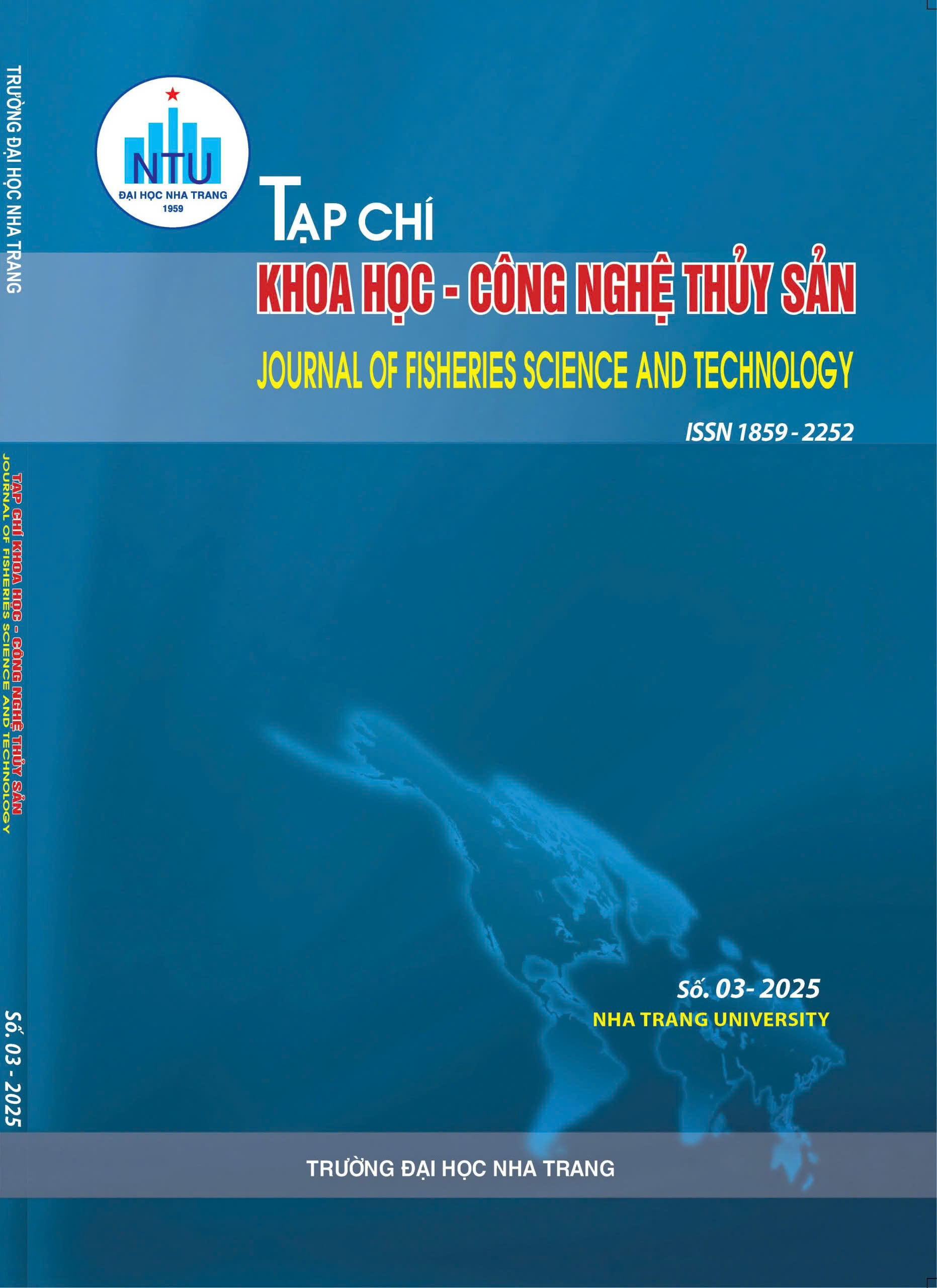##plugins.themes.huaf_theme.article.main##
Abstract
This study was conducted to evaluate the effects of different types of initial feed and various levels of DHA supplementation for rotifers (Brachionus plicatilis) on the growth, survival rate of giant trevally (Caranx ignobilis, Forsskål 1775) larvae. The experimental period lasted from the onset of exogenous feeding until the larvae transitioned to Artemia, at which point the experiment ended. In Experiment 1, three-day-old larvae were fed with three different diets: fertilized oyster eggs, rotifers, and a combination of rotifers and fertilized oyster eggs. Experiment 2 was carried out using five different DHA enrichment levels for rotifers and one control treatment: 70 mg/L, 150 mg/L, 225 mg/L, 300 mg/L, and 375 mg/L and 0 mg/L (control treatment), with each treatment replicated three times. The results showed that in Experiment 1, larvae fed with rotifers exhibited greater length growth compared to those fed oyster eggs or the combination of oyster eggs and rotifers. Larvae fed with oyster eggs alone had the lowest survival rate among the treatments. The results of Experiment 2 showed that DHA enrichment supplementation significantly affected the growth rate, survival rate, and biomass of giant trevally larvae (P<0.05), with the 300 mg/L enrichment level identified as optimal. Increasing the supplementation level to 375 mg/L did not improve survival and even led to reduced rearing performance, comparable to the control treatment (0 mg/L). Based on this study, it can be concluded that giant trevally larvae should be fed DHA-enriched rotifers at a level of 300 mg/L during the initial exogenous feeding stage to achieve optimal growth rate, survival, and biomass
Keywords: Giant trevally, rotifer enrichment, fertilized oyster eggs, larvae, live foods.

